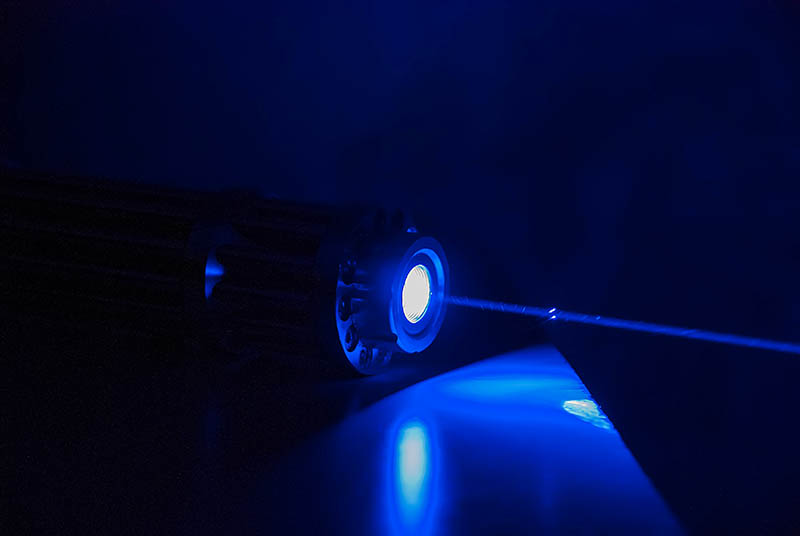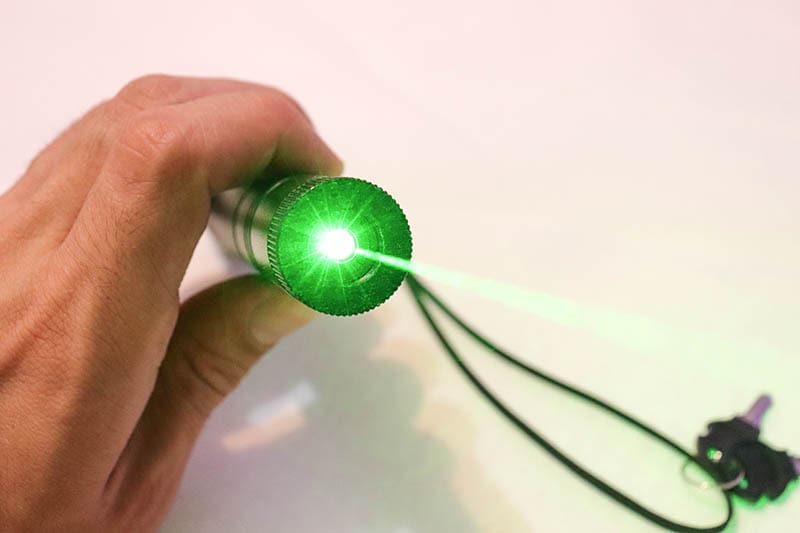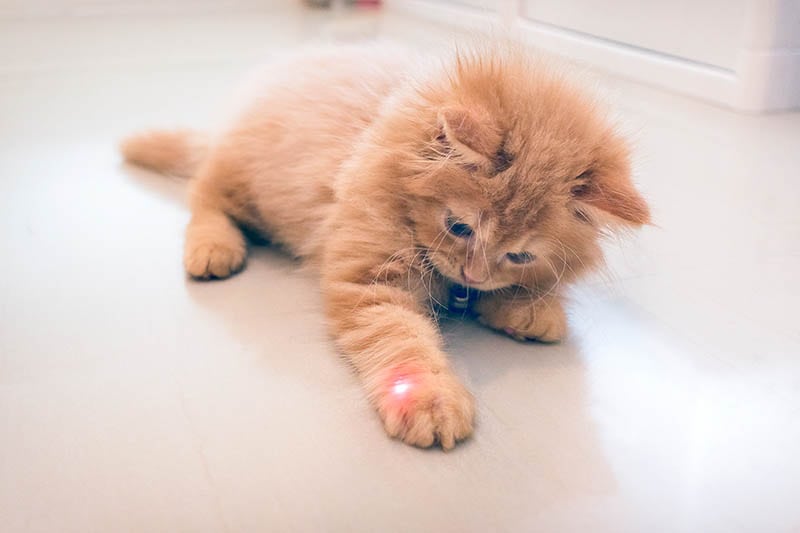Can Laser Pointers Blind You? What You Need to Know!
Last Updated on

While laser pointers can make fun toys or useful classroom aides, they’re not without their risks. You know that you shouldn’t point it at anyone’s face and eyes, but is this just because it’s uncomfortable, or is there a more serious safety risk?
The truth is that laser pointers can cause all sorts of damage to the eyes, and in the worst-case scenarios, that damage can lead to blindness, either temporary or permanent.

Can Laser Pointers Blind You?
Laser pointers can indeed lead to blindness if used improperly. It’s a rare issue, but if you shine a laser pointer long enough into someone’s eye, it is possible.
However, while blindness can result, it’s far more likely that they’ll suffer from a less significant injury. Sometimes, the blindness is temporary, and sometimes, the victim suffers from other issues that affect their vision.
So, while laser pointers can be useful and fun when used correctly, that doesn’t mean you can do whatever you want with them.

Symptoms of Retina Damage From a Laser Pointer
Four common retina symptoms can occur after retina damage from a laser pointer. These include:
- Double vision
- Distorted vision
- Floaters
- Flashing lights
Another issue that a victim might experience is flash blindness. This is a temporary blindness, but it’s uncomfortable and scary and can lead to more problems if the victim is operating machinery or a vehicle.
Safety Tips for Laser Pointers
Just because laser pointers can be dangerous doesn’t mean you can’t ever use them. As long as you follow a few safety precautions, you shouldn’t have any issues. Here are a few safety tips that you should always follow when using a laser pointer.
First, keep laser pointers away from children. Adults can take the proper precautions to ensure that they stay safe, but children aren’t always as careful.
Next, only get low-powered lasers. You want a laser that emits less than 5 mW of power. If you’re unsure, don’t use it.
Third, never directly aim a laser pointer at someone’s face. This is one of the most dangerous things that you can do.
Finally, never point a laser pointer at a vehicle, airplane, train, or any other type of human-operated machinery. The laser pointer can temporarily blind the driver, leading to extremely dangerous situations. Not only is this dangerous, but it’s also illegal in the United States.

Can Laser Pointers Blind Cats or Dogs?
Just like laser pointers can damage the eyes of humans, they can also damage the eyes of cats or dogs playing.
Therefore, you need to get a laser pointer specifically for playing with pets, as these are typically low powered. You still want to do your best to avoid their eyes when using these laser pointers, though.
Furthermore, keep an eye on the surroundings when you’re using a laser pointer to play with your pet. Sometimes your pet focuses so much on the light, they lose track of their surroundings and can accidentally hurt themselves.

Conclusion
If you take the proper precautions, there’s no reason that you can’t use laser pointers. But don’t take their safety for granted — while they’re fun and useful, they can end up hurting someone if you’re not careful.
So, feel free to use them, just take the necessary steps to ensure that you, the people around you, and even your pets stay safe!
Featured Image Credit: OlTarakanov, Shutterstock
About the Author Robert Sparks
Robert’s obsession with all things optical started early in life, when his optician father would bring home prototypes for Robert to play with. Nowadays, Robert is dedicated to helping others find the right optics for their needs. His hobbies include astronomy, astrophysics, and model building. Originally from Newark, NJ, he resides in Santa Fe, New Mexico, where the nighttime skies are filled with glittering stars.
Related Articles:
Can You Use Binoculars to Look At Stars? How to Choose the Right Pair
How to Clean a Refractor Telescope: Step-by-Step Guide
How to Clean a Telescope Eyepiece: Step-by-Step Guide
How to Clean a Rifle Scope: 8 Expert Tips
Monocular vs Telescope: Differences Explained (With Pictures)
What Is a Monocular Used For? 8 Common Functions
How to Clean a Telescope Mirror: 8 Expert Tips
Brightfield vs Phase Contrast Microscopy: The Differences Explained
